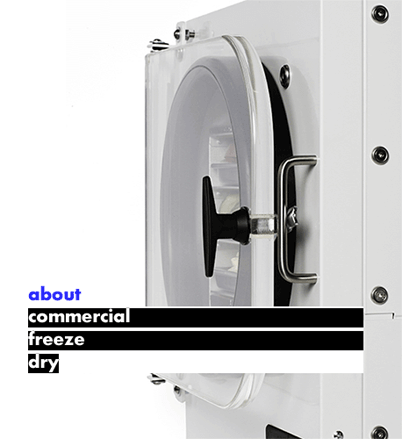In freeze-drying, moisture sublimes directly from the solid state to vapor, thus producing a product with controllable moisture, no need for cooking or refrigeration, and natural flavor and color.
Freeze drying is a rather specialized segment of the food industry. Many people may know of the general nature of freeze drying and some may even be familiar with selective freeze-dried foods. Despite this, most people are not familiar with the basic process of freeze drying.
That mystery should be cleared up now. Compare evaporative drying with freeze drying. If one were to place an ice cube, which is the solid state of water, at room temperature for an extended time, the ice would first melt to the liquid phase. If it is left there long enough, the liquid will evaporate into the atmosphere and become the vapor form of water. This transfer of liquid to vapor is what's known as evaporation. Evaporative drying is what is occurring when conventional dehydrated fruits and vegetabales are processed. The moisture present in the food item is in the liquid form, and it is evaporated to the vapor state. Now, if one takes that same ice cube, the solid state of water, places it in an extremely low vacuum and applies a little heat to accelerate the process, the moisture from the solid state will sublime directly to the vapor state and bypasses the liquid state. The technical terms for this phenomenon is "sublimation and lyophilization". Commercially, the process is reffered to as freeze drying and when heat is applied to make the process economically viable, it is referred to as "accelerated freeze drying".
Evaporative drying is done at atmospheric conditions. Consequently, as the moisture evaporates from the cellular structure of the food, the atmospheric pressure tends to collapse those cells. The end result is a relatively hard and shriveled piece of food which will require a considerable amount of time to reconstitute. When food is dehydrated by the freeze-dried method, there is virtually no pressure on the food during the drying process under the high vacuum conditions. Thus, as the watter is sublimed from the foods, the cellular structure does not collapse and remains porous. Hence, it will reconstitute quite rapidly, merely with the addition of water. In some cases, the heat applied during the conventional dehydration process is enough to alter the natural flavor of the food and may even impart a slight cooked note. With freeze drying, the moisture is being sublimed from the product while it's in the frozen state which permits maintenance of the natural fresh fruit flavor.
Advantages of freeze-dried fruits in confectionery products Chemical and microbial concerns Availability of freeze-dreed fruits The freeze drying process
••• primedice review
E-mail: editor@commercialfreezedry.co.uk
+44 20 7901 0145/7
Terms and Conditions • Privacy Policy
Technical Office - London, UK © 2019-2021
